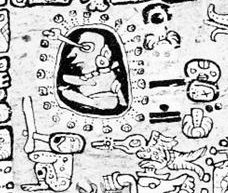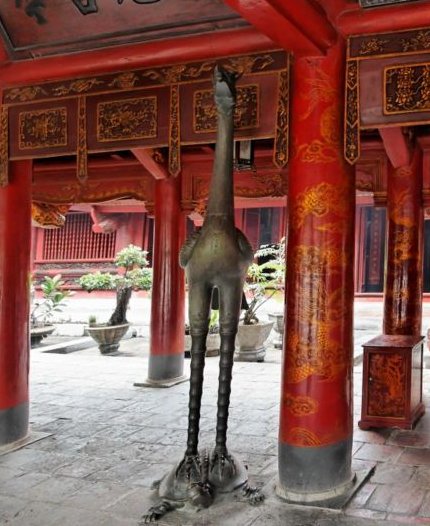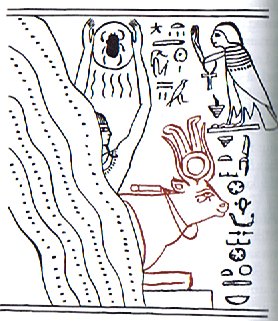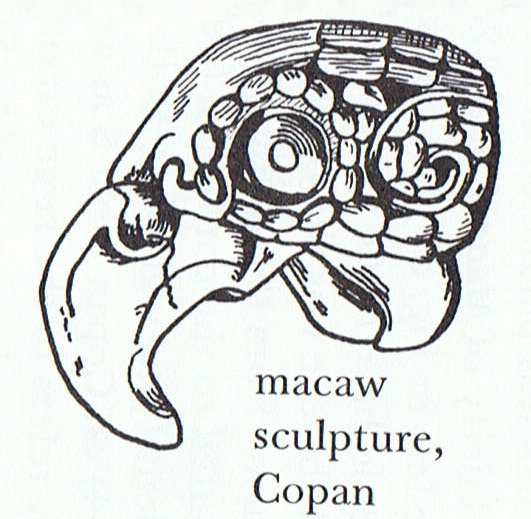Bb1.7 Counting a week ahead from Bb1-28 (*340, 420) will bring us to DECEMBER 29 (420 - 64 + 7 = 363 → 3 * 121 = 300 + 9 * 7), and in ancient Rome this had been regarded as the last day of December - thus at the time when a straight line (string of measurement) might have been drawn by the 'crane' (the astronomer) between ζ Aquarii and δ Gruis.
Currently, though, this pair of stars would have been observed at the 'longitude' of the Full Moon in the night after the day which the Romans had perceived as the end station of the old year (Terminalia) - i.e. the place of the day after the winter solstice according to the Golden Age of the Bull. *339 (February 23) - *64 = *275 = 355 (DECEMBER 21).
... In the inscriptions of Dendera, published by Dümichen, the goddess Hathor is called 'lady of every joy'. For once, Dümichen adds: Literally ... 'the lady of every heart circuit'. This is not to say that the Egyptians had discovered the circulation of the blood. But the determinative sign for 'heart' often figures as the plumb bob at the end of a plumb line coming from a well-known astronomical or surveying device, the merkhet. Evidently, 'heart' is something very specific, as it were the 'center of gravity' ... See Aeg.Wb. 2, pp. 55f. for sign of the heart (ib) as expressing generally 'the middle, the center'. And this may lead in quite another direction. The Arabs preserved a name for Canopus - besides calling the star Kalb at-tai-man ('heart of the south') ... Suhail el-wezn, 'Canopus Ponderosus', the heavy-weighing Canopus, a name promptly declared meaningless by the experts, but which could well have belonged to an archaic system in which Canopus was the weight at the end of the plumb line, as befitted its important position as a heavy star at the South Pole of the 'waters below'. Here is a chain of inferences which might or might not be valid, but it is allowable to test it, and no inference at all would come from the 'lady of every joy'. The line seems to state that Hathor (= Hat Hor, 'House of Horus') 'rules' the revolution of a specific celestial body - whether or not Canopus is alluded to - or, if we can trust the translation 'every', the revolution of all celestial bodies. As concerns the identity of the ruling lady, the greater possibility speaks for Sirius, but Venus cannot be excluded; in Mexico, too, Venus is called 'heart of the earth'. The reader is invited to imagine for himself what many thousands of such pseudo-primitive or poetic interpretations must lead to: a disfigured interpretation of Egyptian intellectual life ...
In the G text, we should remember, the 5th Chinese station named Heart had been located at day zero before the 1st glyph, where the Full Moon would have been at right ascension line *247.
The added cue Fox ought to be referring to Arundati, the common wife of the 7 Rishis up in Ursa Major (alias Itzam-Yeh alias 7 Macaw). Cfr the name Al-risha, the Knot, for α Piscium: ... Among the Nahyssan of S. Carolina time was measured and a rude chronology arranged by means of strings of leather with knots of various colour, like the Peruvian quipos. The Dakota use a circle as the symbol of time, a smaller one for a year and a larger one for a longer period: the circles are arranged in rows, thus: OOO or O-O-O. The Pima of Arizona make use of a tally. The year-mark is a deep notch across the stick ...
|
||||||||||||||||||||||||||||||||||||||||||||||||||||||||||||||||||||||||









